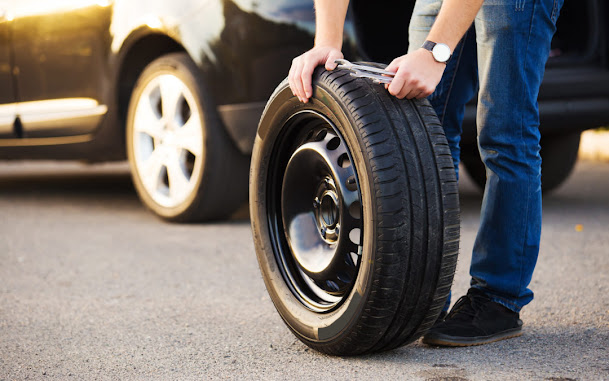Tyres in poor condition are like parachutes with holes. Do not use them! They are a car’s connection to the road, a connection that amounts to a single palm print per tyre. Braking, accelerating, gripping, and cornering - all of these things can only be done safely with properly maintained tyres.
Car tyres pressure is a huge factor when it comes to the performance of your car. It is a thought we too often push to the back of our minds, thinking that a mechanic will check at the next service, but, in reality, it is something we as car owners should be acquainted with and check monthly. Here are five reasons why.
1. Safety first
If a tyre is overinflated, its footprint (the quantity of rubber in contact with the road) is decreased. The smaller the footprint, the lesser the grip and your ability to control the car is greatly reduced, particularly when it comes to breaking. Overinflated tyres are especially dangerous in the rain.
An underinflated tyre can lead to a similar reduction in control, specifically with cornering. Tyres inflated to the proper pressure allow for more accurate handling.
2. Fuel economy
If a tyre is underinflated, its footprint is greater. Because it has more contact with the road, there is more friction, which means the engine has to work harder to spin it. An engine working harder consumes more fuel. Ever had to ride a bike with a flat? Not fun.
3. Tyre longevity
If a tyre is overinflated or underinflated, its lifespan is greatly reduced. In the case of the former, the tyre becomes stiff and rigid and suffers more damage when driven over potholes or uneven surfaces.
In the case of the latter, the simple fact that more rubber is in contact with the road leads to faster wear. Also, underinflated tyres generally have greater wear on the outer edges, or shoulders, and need to be replaced with greater frequency.
4. The environment
Significant progress is being made when it comes to recycling tyres, particularly in the field of road surfaces. Nonetheless, not many old tyres make it this far. Of the approximately 50 million vehicle tyres that reach end-of-life across Australia annually, 16% are recycled. The fate of the remaining 84% is landfill, illegal stockpiling, the bottom of the ocean or quirky patio furniture. The longer your tyres last (in other words, the fewer tyres you go through in your driving life), the better off the environment is.
As indicated above, incorrect tyre pressure leads to higher fuel consumption, and the environment is not a huge fan of petroleum products. Extracting them from the earth is energy-intensive, as is shipping them around the globe. Plus, there is the occasional oil spill. For those electric car drivers sitting back with a smug smile, think again. Unlike Europe, where the electricity used to power electric cars is generated from renewables or nuclear energy, in Australia, an electric car is actually running almost primarily on brown coal. Dirty stuff. The environment is not a fan of that either.
5. Tyre inspection
In order to check your tyre pressure, you have to crouch down and attach the hose fitting to the valve stem. While you are down there, with your face close to the rubber, it is a great opportunity to give the tyre a good squeeze.
Look for signs of wear or damage to the tread and sidewall. Look for small bulges, which are the result of impact damage and indicate weakened rubber and a higher likelihood of a blowout. Also, run your finger along the grooves to look for the treadwear indicator bar, and make sure it is still sitting snugly beneath the tread of the tyre.
How do you know what the correct type of pressure is? Good question. Usually, the recommended pressures for your vehicle’s tyres will be recorded on the driver’s door jamb. The pressure will sometimes differ between the front and rear tyres, so be aware of that. If not, check the car’s manual, which should be stored in the glovebox at all times.
Correct tyre pressure is something that is important; therefore, if you would rather have an expert check them out, do not hesitate to come by any nearby tyre centre.
Nitrogen Can Help
If you are the kind of person who does not have the time to check tyre pressures frequently or if you are unsure how to operate a tyre pressure gauge at the service centre, then you might want to think about inflating your tyres with nitrogen rather than normal air.
The reason is that normal air or rather oxygen molecules are smaller than nitrogen molecules and so the pressure loss with nitrogen, which has bigger molecules, is much less than normal air. This means that the pressures in the tyres will remain constant over a longer period of time, so you will not need to top up the pressures as often.
Conclusion
Now you understand the importance of maintaining the correct Car Tyres Uxbridge pressure. Ignoring tyre pressure can affect your safety, your car’s fuel economy, and your tyre lifespan. Regular inspection, either personally or by a professional, is crucial for optimum performance and safety on the road.


.png)

Comments
Post a Comment